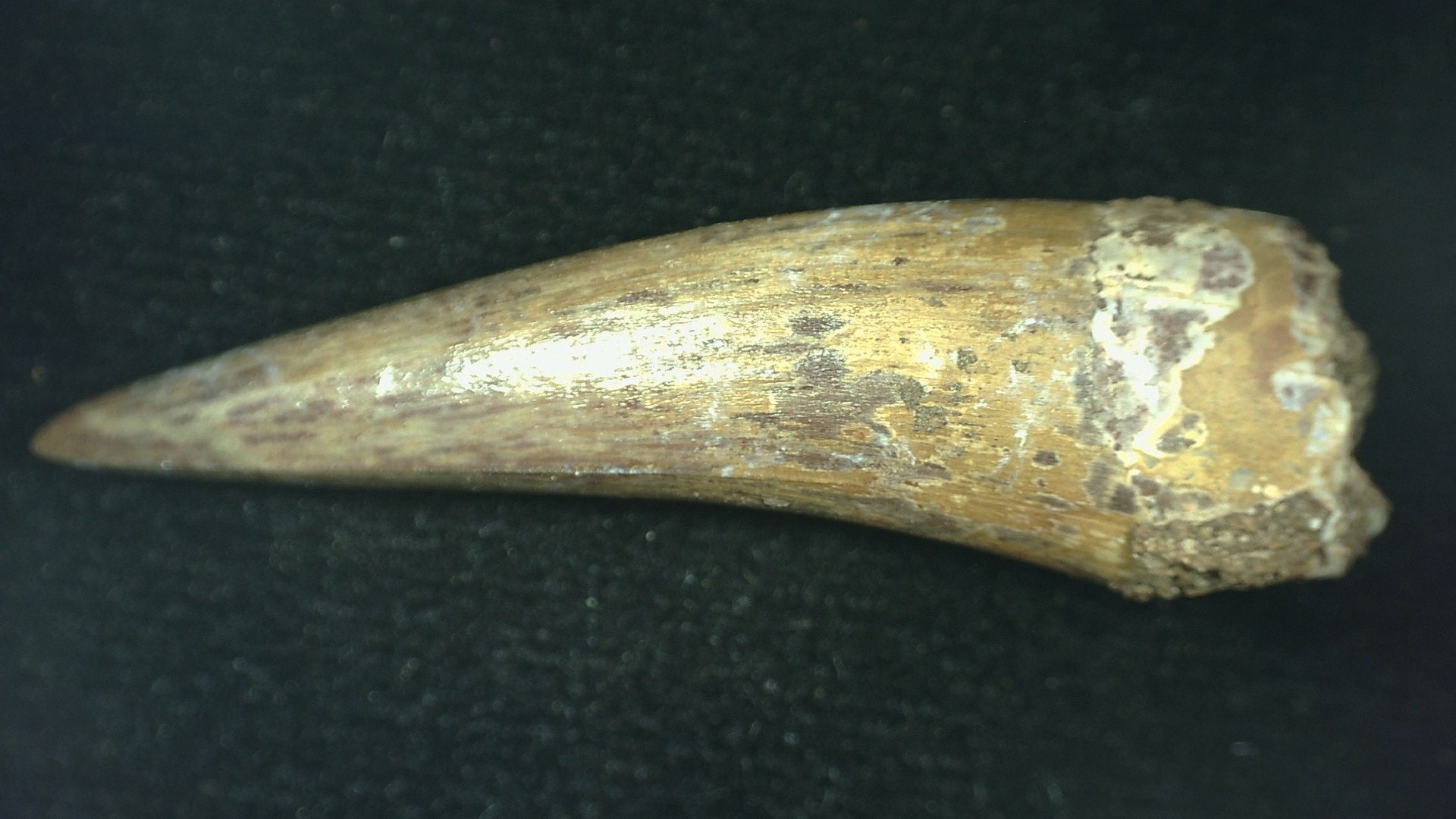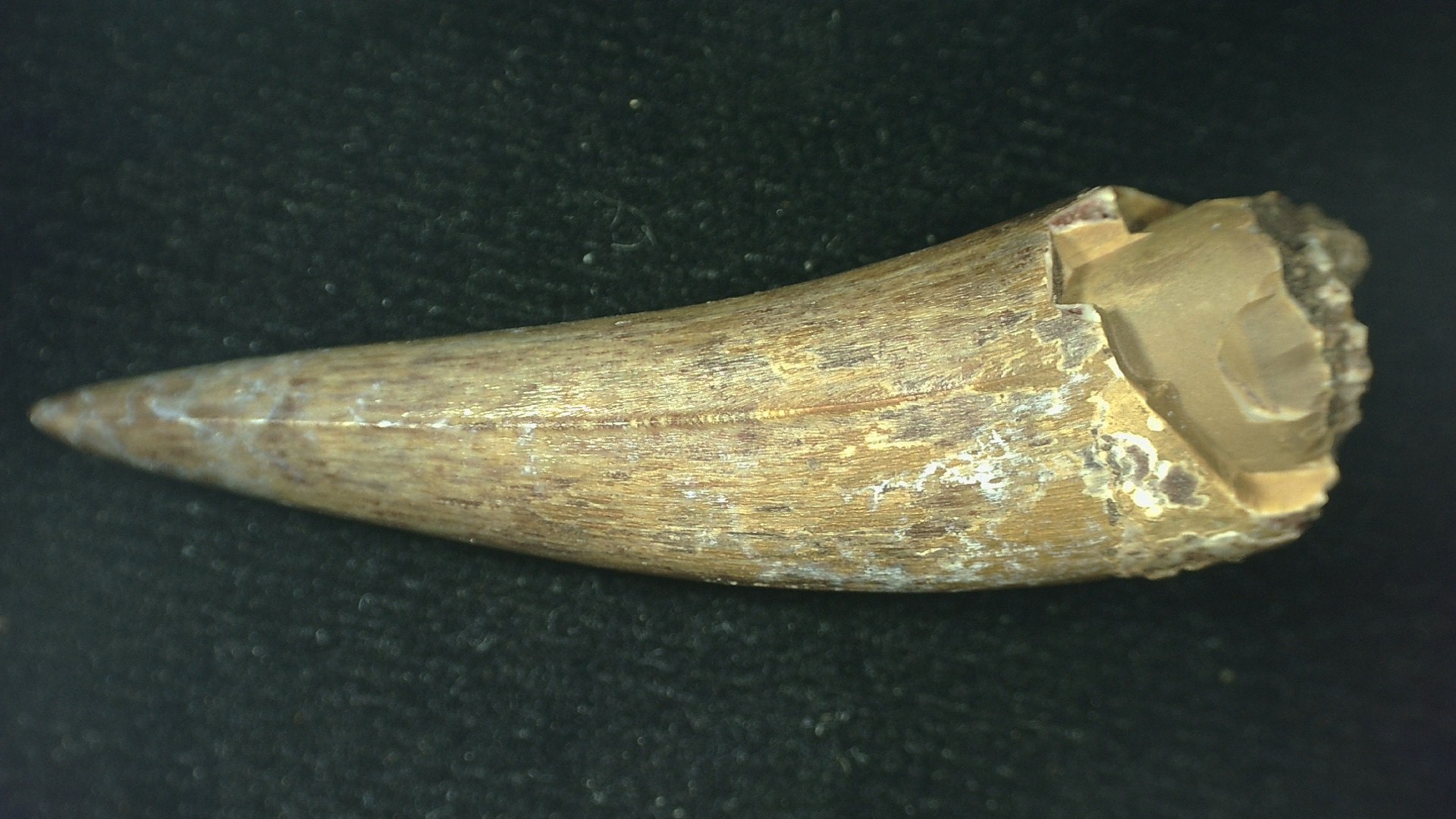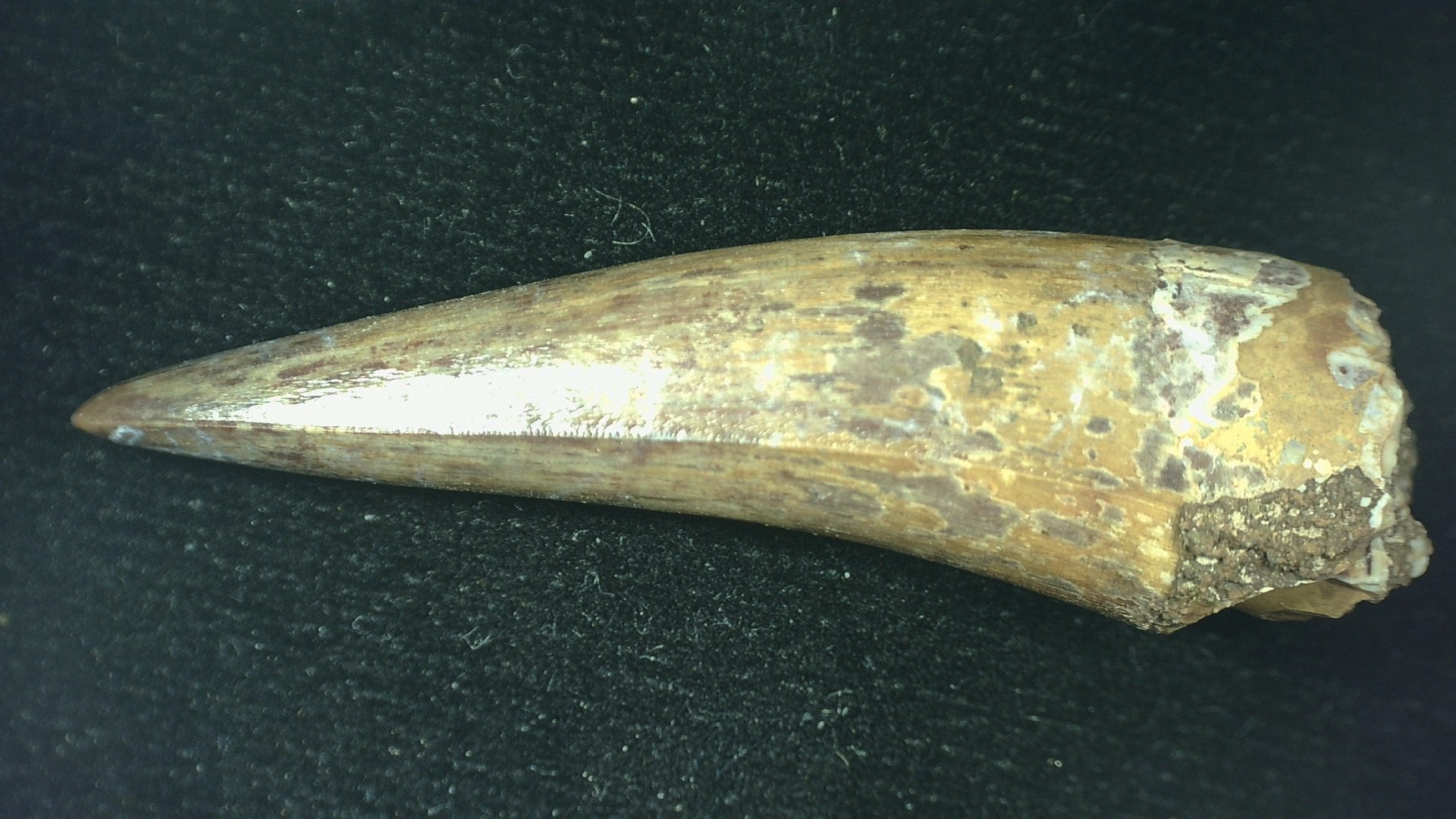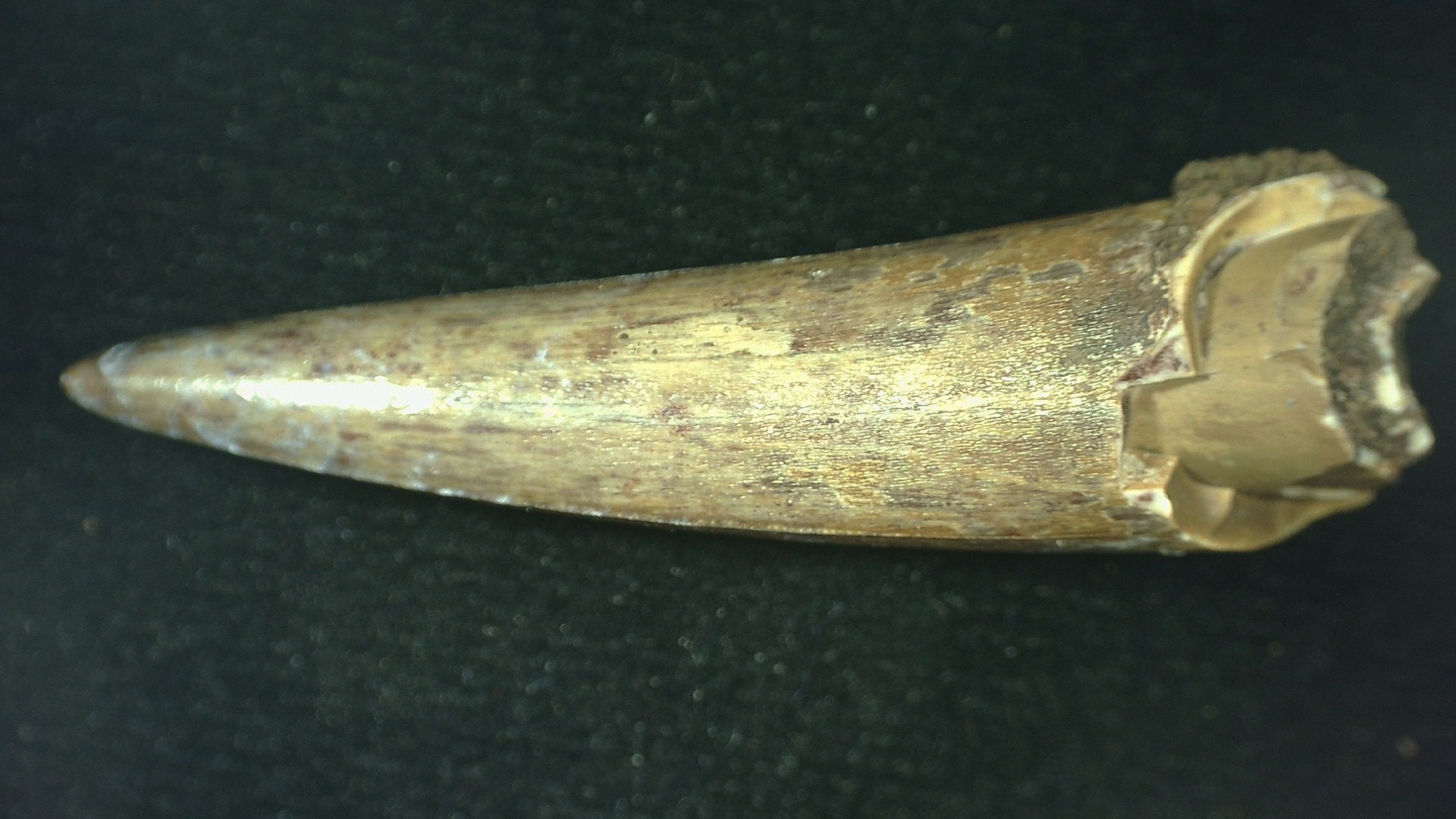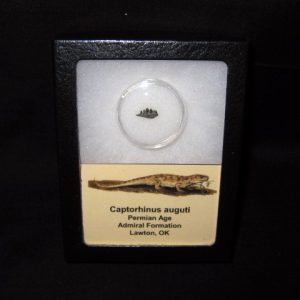Description
- Phytosaur FANG
- Triassic Age
- Cooper Canyon Formation
- West Texas
- Specimen measures 1.67″ long and will come in the 3.25″ x 4.25″ Riker Mount with Label as Shown
- More Reptiles for Sale
Phytosaurs are an extinct group of large, mostly semi-aquatic Late Triassic archosauriform reptiles. Phytosaurs belong to the family Phytosauridae and the order Phytosauria. Phytosauria and Phytosauridae are often considered to be equivalent groupings containing the same species, but some studies have identified non-phytosaurid phytosaurians. Phytosaurs were long-snouted and heavily armoured, bearing a remarkable resemblance to modern crocodilians in size, appearance, and lifestyle, as an example of convergence or parallel evolution. The name “phytosaur” means “plant reptile”, as the first fossils of phytosaurs were mistakenly thought to belong to plant eaters. The name is misleading because the sharp teeth in phytosaur jaws clearly show that they were predators.
For many years phytosaurs were considered to be the most basal group of crocodile-line archosaurs, meaning that they were thought to be more closely related to the crocodilians than to birds (the other living group of archosaurs). Recent studies of the evolutionary relationships of early archosauriforms suggest that phytosaurs evolved before the split between crocodile- and bird-line archosaurs and are the sister taxon of Archosauria.
Phytosaurs had a nearly global distribution during the Triassic. Fossils have been recovered from Europe, North America, India, Morocco, Thailand, Brazil, Greenland and Madagascar. Fossils attributed to phytosaurs have been found in Early Jurassic rocks, possibly extending their temporal range beyond the Triassic-Jurassic boundary.


